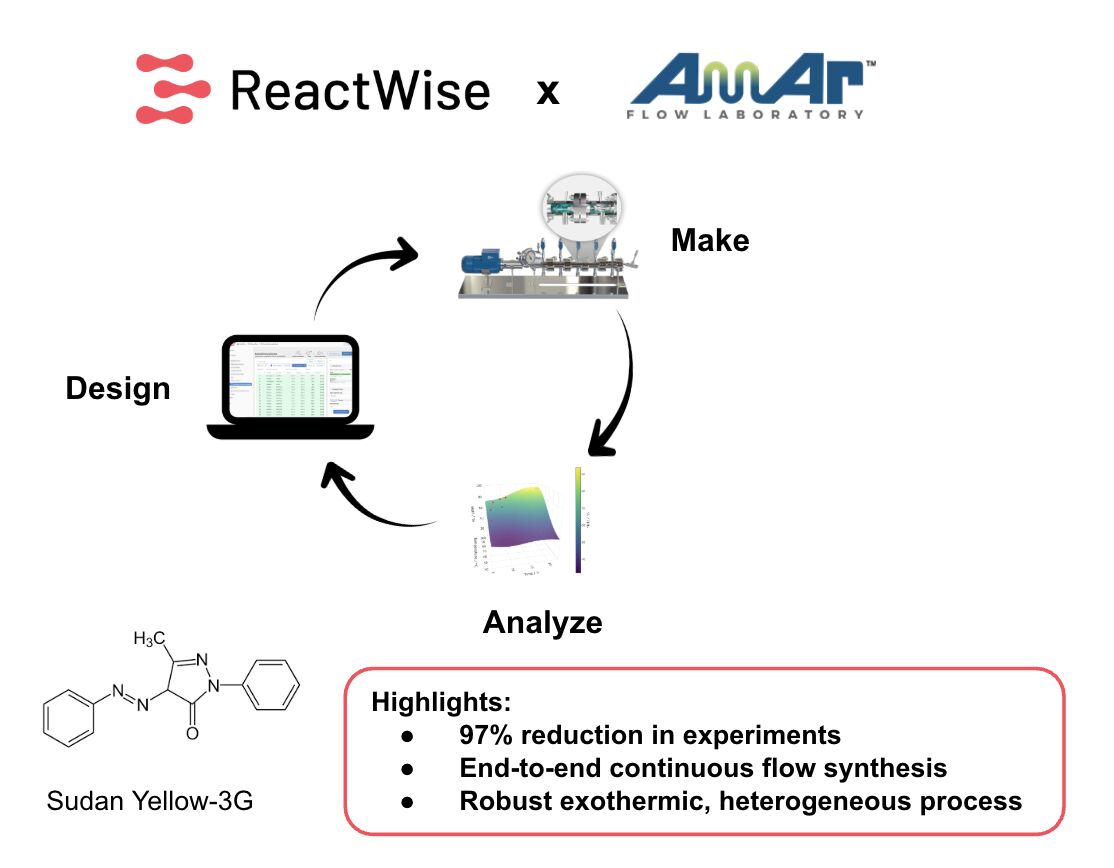
From bench to plant, faster than ever - read how we made dye manufacturing 30x more efficient in our new white paper.

From bench to plant, faster than ever - read how we made dye manufacturing 30x more efficient in our new white paper.
Azo dyes like Sudan Yellow-3G are made on an industrial scale, coloring textiles, plastics, and coatings across the world. But behind the color lies a complex manufacturing challenge - hazardous batch reactions, unstable intermediates, and unpredictable yields that make large-scale production both risky and inefficient.
Together with Amar Flow Laboratory, we decided to rethink this process from the ground up.
Our goal was to take a reaction that’s been run the same way for decades and make it continuous, controlled, and intelligent.
Using Amar’s MicroFLO™ and SlurryFLO™ reactors, we developed a telescopic four-step process that made it possible to handle exothermic and slurry-forming steps with precise thermal control and consistent performance - something almost impossible to achieve in conventional batch systems.
To go beyond trial and error, ReactWise successfully guided the process development. Compared to a 3-level full factorial design (2,187 experiments), ReactWise© required only 71 experiments to locate the global optimum, representing a 97% reduction in experimental burden
The result is more than just a faster process development.
It’s a demonstration that complex industrial chemistry can be made safer, cleaner, and more efficient when continuous flow and machine learning work hand in hand. What used to take months of experimentation can now be achieved in days, with higher reproducibility and a clearer understanding of the process itself.
This wasn’t a simulation or a case study - it was a real industrial optimization, proving that the combination of advanced flow hardware and AI-driven experimentation is not the future of chemical manufacturing anymore.
It’s happening now.
Read our pre-print here: https://chemrxiv.org/engage/chemrxiv/article-details/68df2bdf5dd091524fa1b79a


